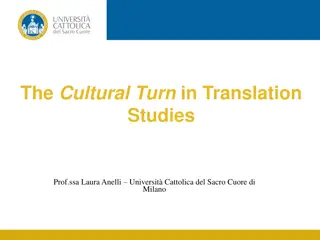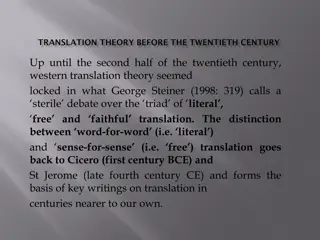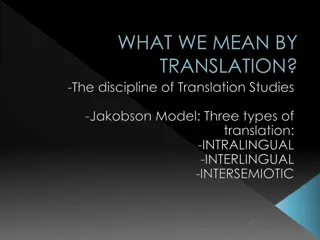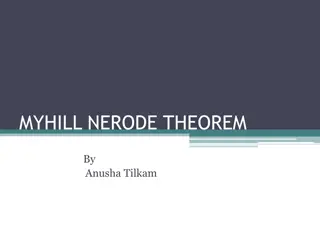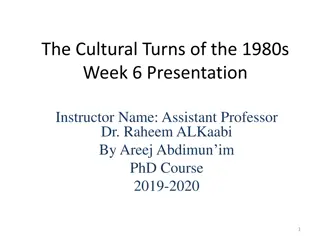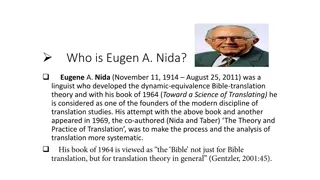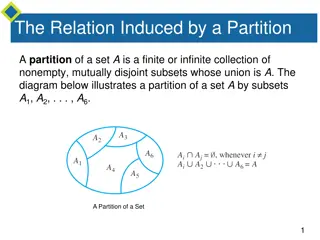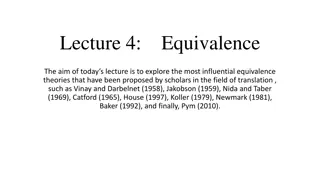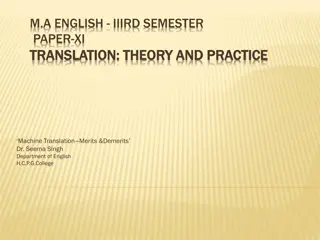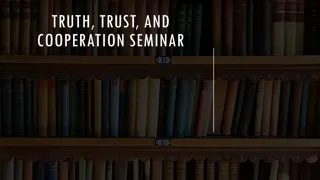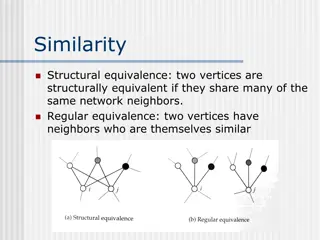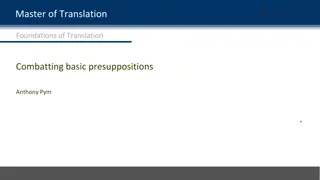Challenges in AV Translation: Acronyms and Equivalence Strategies
Acronyms are commonly used in English but present challenges in Arabic translation. Translating acronyms like RFID tracker requires explication and abbreviation strategies. Additionally, translating between French and English poses difficulties due to the loss of foreign elements. Subtitlers use font variations and equivalence strategies to convey linguistic and cultural identities effectively in AV translation.
Download Presentation

Please find below an Image/Link to download the presentation.
The content on the website is provided AS IS for your information and personal use only. It may not be sold, licensed, or shared on other websites without obtaining consent from the author.If you encounter any issues during the download, it is possible that the publisher has removed the file from their server.
You are allowed to download the files provided on this website for personal or commercial use, subject to the condition that they are used lawfully. All files are the property of their respective owners.
The content on the website is provided AS IS for your information and personal use only. It may not be sold, licensed, or shared on other websites without obtaining consent from the author.
E N D
Presentation Transcript
Acronyms in particular. They are used abundantly in the English language. Such a feature is uncommon in Arabic. However, when acronyms are used in the ST, the TL (Arabic) superordinate/hypernym is used. Acronyms /are one of the challenges in AVT, in subtitling
Returning to the issue of acronyms, another more complex example from the episode Sleuths is when the bear, which has been sedated, wakes up immediately after being injected with a microchip in order to track it in the wild:
The acronym RFID tracker has been translated in its full version, with eight words in the TT when it has only two words in the ST. The best strategy is to explicate it the first time it occurs in a film, and then use the short form that is, the tracker would suffice.
is another challenge in this episode, because the subtitler has to translate an English translation of some French sentences and phrases. a va?
The subtitler has no choice but to translate both the French and English phrases successively into Arabic. Obviously, translation loss occurs and this cannot be compensated in this instance. The foreign element in the original has been lost in the TT. This issue is inescapable as there is not enough time to indicate that the original has some French lexical items.
According to O'Sullivan (2011:192), the use of various fonts in subtitles can be a reasonable option of signalising the different linguistic and cultural identities on the screen. fonts (bold, italics) or colors colors
Subtitlers and indeed AV translators use the strategy of equivalence, sometimes employing a more general item (a superordinate) for a more specific item (a hyponym) and vice versa. Superordinates are sometimes useful when they are shorter, a strategy used at times in subtitling in order to reduce the number of words displayed on screen, as they are in the written and not spoken form.
Pun is one of the most popular forms of verbal humour. It has always been, and continues to be, one of the most problematic issues in translation (Aleksandrova 2018a: 5). Puns based on the use of homonyms or paronyms cause the greatest difficulties for translators. The translation of polysemic words, one of the meanings of which in the source language is not represented in the target language, or idioms, which do not have a direct match-idiom in the TL, is also problematic.
Coke refreshes you like no other can An emperor is a ruler Sure, I used to carry an emperor with me. You look pretty Thank you. I look pretty too can emperor to school pretty dirty, susie pretty when I m clean,
THANK YOU




